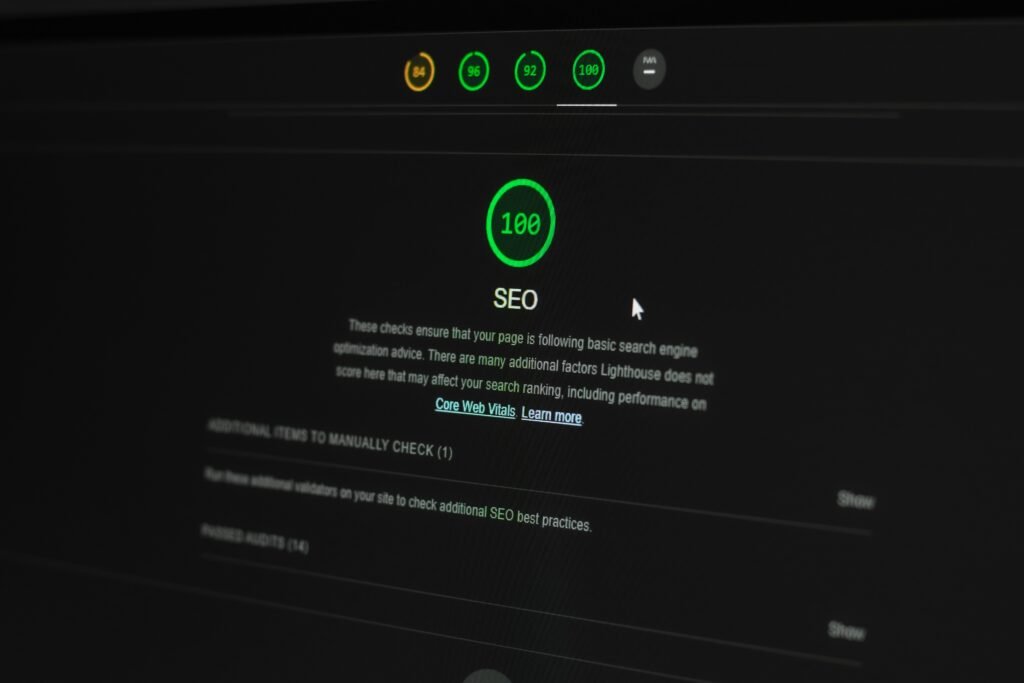
Top 10 Free Website Traffic Checker Tools to Monitor Your Online Performance
Introduction to Website Traffic Checkers
Website traffic checkers are essential tools for anyone involved in online business, digital marketing, or content creation. These tools play a crucial role in monitoring and analyzing various aspects of website performance, focusing specifically on how users interact with a website. They provide valuable insights into user behavior, including how visitors arrive at a site, which pages they visit, and the duration of their stay. Understanding these metrics is vital for website owners aiming to improve their online presence and to attract and retain more users.
The importance of employing a website traffic checker cannot be overstated, as it allows businesses to identify the strengths and weaknesses of their online strategies. By examining traffic sources, such as organic search, social media, or referral links, website owners and digital marketers can determine which channels are most effective in driving visitors. This data empowers them to allocate resources effectively, optimize marketing campaigns, and ultimately enhance engagement.
Additionally, website traffic checkers help in assessing overall performance metrics such as bounce rates, conversion rates, and user demographics. Understanding who the visitors are and how they find a website can lead to tailored content strategies that resonate with the target audience. For example, if a particular segment of visitors is identified as highly engaged, it might prompt website owners to create more content specifically aimed at that demographic.
In essence, these tools serve as a compass, guiding site owners and marketers towards data-driven decisions informed by user behavior and traffic patterns. Employing a website traffic checker not only aids in measuring current performance but also fosters the development of strategic plans for future growth, making it an invaluable asset for any online endeavor.
How Website Traffic Checkers Work
Website traffic checkers are essential tools that provide insights into the performance of websites on the internet. These tools employ various mechanisms to analyze numerous data points, ultimately offering valuable metrics that webmasters and marketers can leverage. The types of data they track typically include page views, unique visitors, bounce rates, session duration, and referral sources, among other indicators.
The primary method by which data is sourced includes server logs, which record every request made to the web server. These logs capture critical information, such as IP addresses, user agents, and the requested resources. Analyzing server logs allows website owners to understand which pages attract the most visitors and how users navigate through the site. This granularity provides a comprehensive overview of user behavior.
Another common approach involves the use of cookies. Cookies are small files stored in a user’s browser that allow website traffic checkers to track individual sessions. When a user visits a site, cookies help identify whether the visitor is a new or returning user, providing insights into visitor retention. Additionally, cookies can help in measuring engagement metrics such as session duration, which is vital for understanding user interaction.
Third-party analytics tools also play a significant role in gathering traffic data. These platforms often integrate JavaScript code snippets into the website’s scripts, enabling the collection of detailed metrics about user behavior without relying solely on server logs or cookies. By utilizing these methods, website traffic checkers can deliver a clear picture of online performance, helping website owners make informed decisions to enhance their digital presence.
Criteria for Choosing a Traffic Checker Tool
When selecting a website traffic checker tool, it is crucial to consider several key factors that can impact the effectiveness of the tool and its usability for your specific needs. One of the foremost criteria is user-friendliness. A well-designed interface that allows for easy navigation ensures that even beginners can access the data with minimal difficulty. This can enhance the overall experience and lead to more informed decision-making regarding enhancements to your web performance.
Another important factor is the range of metrics provided by the traffic checker tool. An effective tool should offer a comprehensive view of various performance indicators, including unique visitors, page views, bounce rates, and average session duration. Understanding these metrics can help you to derive actionable insights about your website’s performance and audience behavior.
Real-time tracking ability is also a significant consideration. Tools that offer live data allow for immediate responses to any fluctuations in traffic, enabling quick adjustments to your strategies if necessary. This feature can be particularly beneficial during marketing campaigns or content launches when traffic patterns may vary widely.
Data accuracy cannot be overlooked in this selection process. Reliable traffic data is essential for informed decision-making. Many free tools may compromise on accuracy, so it is wise to read reviews or seek recommendations to find trustworthy solutions.
Furthermore, it is beneficial for the traffic checker tool to have integration capabilities with other marketing tools. This can streamline your workflow and enable more efficient tracking and reporting. Lastly, be aware of the limitations that often come with free versions of these tools. Identifying these constraints beforehand can help you determine if a particular tool meets your ongoing analytical requirements. Evaluating these criteria will empower you to select the most suitable website traffic checker for your needs.
Top Free Website Traffic Checker Tools
In the ever-evolving landscape of digital marketing, having access to reliable data is crucial for any website owner or online marketer. A website traffic checker tool serves as an integral part of this toolkit, allowing users to gain valuable insights into their website’s performance. Here, we highlight some of the top free tools available, each with unique features catering to various user needs.
1. Google Analytics – Widely regarded as one of the most comprehensive traffic analysis tools, Google Analytics offers in-depth reports about user behavior, acquisition channels, and demographics. The tool allows for real-time monitoring, making it a must-have for serious website owners.
2. SimilarWeb – This platform not only provides traffic insights for your own website but also allows you to compare competitor performance. Its unique features include traffic sources and engagement metrics, which help users identify successful strategies within their industry.
3. SEMrush – Known primarily for its SEO capabilities, SEMrush also includes a robust traffic analyzer. This tool offers information on organic search traffic, backlinks, and PPC performance, making it ideal for marketers seeking a comprehensive analysis of their online presence.
4. Alexa – A veteran in the field, Alexa provides traffic estimates and insights about global web rankings. Its audience insights and competitive analysis tools help users better understand where they stand in the internet landscape.
5. Ahrefs – While primarily recognized for its backlink analysis, Ahrefs offers essential traffic checker tools. Users can explore top organic keywords and referral traffic, providing a well-rounded view of their website’s performance.
6. Ubersuggest – This user-friendly tool simplifies traffic analysis by presenting key metrics in an accessible format. Ubersuggest also offers keyword suggestions, making it especially useful for SEO enthusiasts.
7. Serpstat – An all-in-one tool, Serpstat provides traffic estimates along with keyword research and competitor analysis. Its versatility makes it appealing to a wide range of users, from SEO specialists to amateur bloggers.
8. Clicky – Focused on real-time analytics, Clicky allows users to monitor their website traffic live. It also offers heatmaps to visualize user behavior, helping website owners make informed decisions based on live data.
9. Matomo – As an open-source platform, Matomo appeals to those who value privacy. It provides complete ownership of data and offers comprehensive traffic statistics alongside marketing insights.
10. Piwik PRO – Similar to Matomo, Piwik PRO is another privacy-focused analytics tool. It provides free traffic analysis for smaller businesses while ensuring compliance with data protection regulations.
These free website traffic checker tools can significantly enhance an online marketing strategy, each catering to diverse needs and offering various functionalities. Selecting the right tool can enable website owners to monitor performance effectively, optimize their strategies, and ultimately drive more traffic to their sites.
Google Analytics: The Industry Standard
Google Analytics is widely regarded as the premier website traffic checker tool, offering a comprehensive suite of features that cater to both novice and experienced webmasters. As an integral part of Google’s suite of marketing tools, it enables users to monitor and analyze their online performance effectively. One of the key advantages of Google Analytics is its ability to track a multitude of metrics, including visitor behavior, traffic sources, conversion rates, and audience demographics. This wealth of information equips businesses with the insights needed to refine their online strategies.
Setting up Google Analytics is a straightforward process. Users must create an account, obtain a tracking ID, and incorporate a small snippet of code into their website. This integration allows Google Analytics to gather data seamlessly. Once configured, users can access the platform’s dashboard, which presents data in a user-friendly format, enabling the interpretation of complex datasets with ease. The extensive reporting features allow users to segment data by various dimensions, such as time, location, and device type, providing a granular view of website performance.
Moreover, Google Analytics provides valuable insights that help improve website performance. By analyzing the data collected, users can identify trends, such as which content resonates most with their audience or which traffic sources are most effective. This information allows businesses to adjust their marketing strategies, optimize their website, and ultimately increase their conversion rates. With its robust capabilities and reliability, it is no surprise that Google Analytics remains the preferred choice for many users looking to monitor their website traffic and enhance their online presence.
Comparative Analysis of the Tools
In selecting the most appropriate website traffic checker, it is essential to consider various factors that define the effectiveness and usability of these tools. Key components to analyze include data granularity, reporting features, and customer support.
Data granularity refers to the level of detail provided by the traffic checker. Some tools offer real-time data, presenting live visitor counts and current site interactions. This is particularly beneficial for businesses that require up-to-the-minute analytics for active campaigns, allowing them to make immediate adjustments. In contrast, other tools may focus on aggregate data over longer periods, providing insights into overall performance trends but potentially missing out on critical real-time dynamics.
Reporting features also significantly affect user experience. An effective website traffic checker should deliver comprehensive and customizable reports, enabling users to visualize traffic sources, visitor demographics, and behavior. Tools with advanced filtering options allow users to evaluate specific segments of their audience, enhancing insights and decision-making. Some tools may fall short in this area, offering only basic reports which may not suffice for users needing in-depth analysis.
Another essential consideration is customer support. As users navigate any technical issues or feature inquiries, responsive and knowledgeable support becomes invaluable. Some traffic checker tools offer extensive tutorials, forums, and direct customer support, while others may have limited resources, potentially hindering user experience during critical periods. Evaluating the availability of resources such as live chat, email support, or comprehensive documentation is vital for ensuring ongoing assistance.
In conclusion, by comparing these factors among the various website traffic checker tools, users can make informed decisions based on their individual requirements and performance expectations. Each tool has its strengths and weaknesses, making it imperative to consider what features align best with personal or business goals.
Tips for Analyzing Traffic Data Effectively
Analyzing traffic data is crucial for understanding your online performance and optimizing your strategies. A website traffic checker provides a wealth of insights, but it’s essential to approach this data methodically. Here are some actionable tips to maximize your analysis.
First, focus on key metrics such as unique visitors, page views, bounce rates, and session duration. These metrics are integral for gauging audience engagement and content effectiveness. For instance, if you notice a high bounce rate, it may indicate that your landing pages are not appealing or relevant enough to your visitors. In this case, further investigation into user experience might be warranted.
Next, identify trends by comparing data over different periods. Evaluate fluctuations in website traffic after implementing marketing campaigns or changes in content strategy. This historical perspective allows you to identify what strategies are yielding results and enables you to replicate successful efforts in the future. Utilize tools like Google Analytics to visualize these trends through graphs and reports, making the data easier to digest.
Measuring the effectiveness of your campaigns also involves setting clear goals. Use the traffic checker tools to establish benchmarks for your campaign objectives. Track how well your traffic aligns with these goals, adjusting tactics as needed to ensure alignment with your overall marketing strategy. For example, if a social media campaign did not drive expected traffic, consider revising your messaging or targeting strategy.
Finally, leverage the insights obtained from these analyses to inform future content and promotional strategies. Create content that resonates with your audience based on traffic data, and consider diversifying your channels for promotion. By continually refining your approach based on actual traffic data, you position your website for sustained growth and improved audience engagement.
Common Mistakes to Avoid When Using Traffic Checkers
Using a website traffic checker can significantly enhance your understanding of your online performance, but it is essential to avoid common pitfalls that users often encounter. One prevalent misconception is assuming that high traffic numbers alone equate to high success. While traffic is a crucial metric, it does not always translate into conversions or engagement. Therefore, focusing solely on these numbers may provide a skewed perspective of your website’s effectiveness.
Another common mistake is relying too heavily on the data from a single traffic checker. Different tools utilize various methodologies to calculate traffic, leading to discrepancies in the reported figures. This inconsistency can mislead website owners into making ill-informed decisions. It is advisable to cross-reference data from multiple traffic checker tools to gain a more accurate and comprehensive view of your site’s performance. By doing so, you can better assess trends and make strategic adjustments based on a range of information.
Moreover, many users neglect to analyze metrics beyond traffic volume. While total visits are important, metrics such as bounce rate, average session duration, and user demographics can provide invaluable insights into visitor engagement. A thorough examination of these additional metrics is vital for developing a holistic understanding of how visitors interact with your site. This broader focus allows for the identification of areas requiring improvement and optimization.
In conclusion, while website traffic checkers are indispensable tools for monitoring online performance, being aware of these common mistakes is essential. By avoiding false assumptions and broadening the scope of analysis, you can leverage these tools more effectively, ultimately improving the overall success of your digital presence.
Conclusion: Choosing the Right Tool for Your Needs
In the digital landscape, understanding your website’s performance is paramount. The discussion around website traffic checker tools has highlighted their critical role in analyzing visitor behavior, optimizing content strategies, and enhancing overall online presence. Selecting the appropriate tool can significantly impact your ability to track vital metrics such as visitor numbers, engagement rates, and traffic sources.
As mentioned in earlier sections, various tools offer distinct functionalities, from comprehensive analytics to user-friendly interfaces. It is essential to assess your specific requirements before making a selection. If your primary goal is to monitor real-time traffic data, opting for a tool with advanced features and reliable uptime is advisable. Conversely, if you are just starting, a simpler tool that provides basic insights might suffice without overwhelming you with data.
Furthermore, the choice of a website traffic checker may also depend on your budget constraints and the scale of your operations. Many free tools provide excellent insights, making them appealing for small businesses and individual bloggers. As you scale, however, you may wish to explore paid options that offer deeper analytics and more robust support. Leveraging these tools effectively allows you to identify successful strategies and areas for improvement, ultimately enhancing your website’s performance.
By starting to track your website traffic, you are committing to a data-driven approach that fosters growth and engagement. As you evaluate the various options available, consider how each tool aligns with your objectives and reporting needs. Consistent monitoring will enable you to adapt and optimize your online efforts, facilitating better engagement with your audience and driving continuous improvement.

